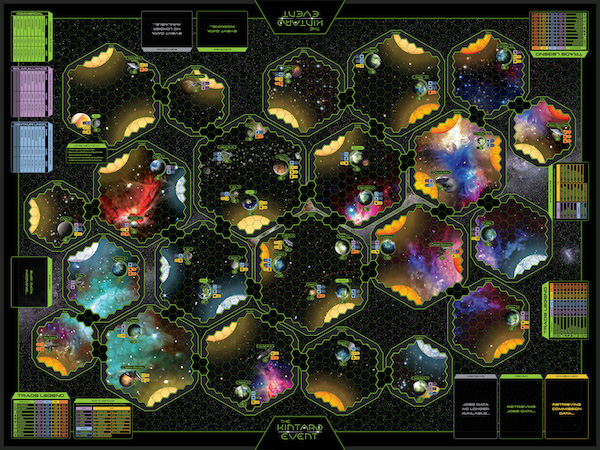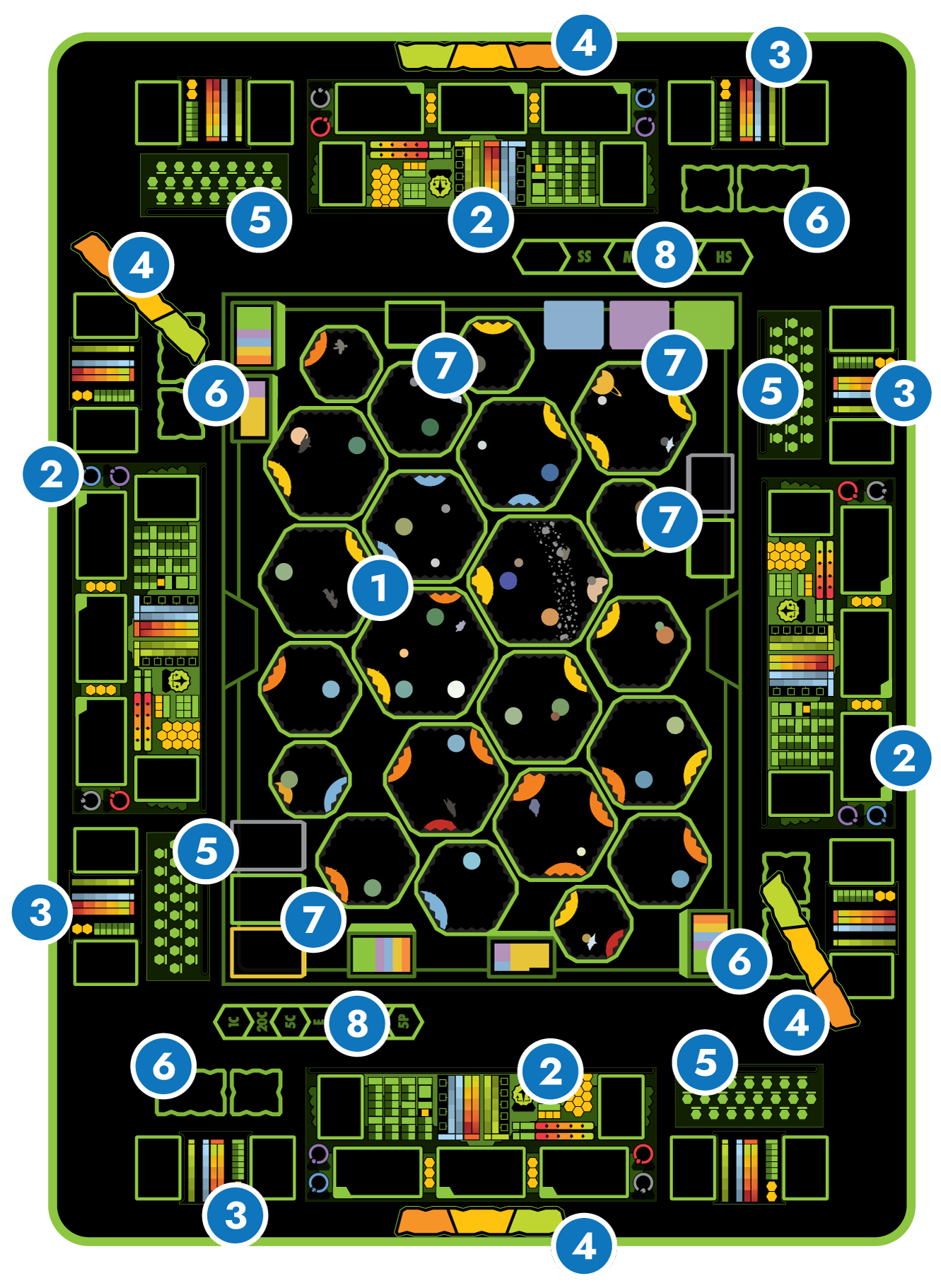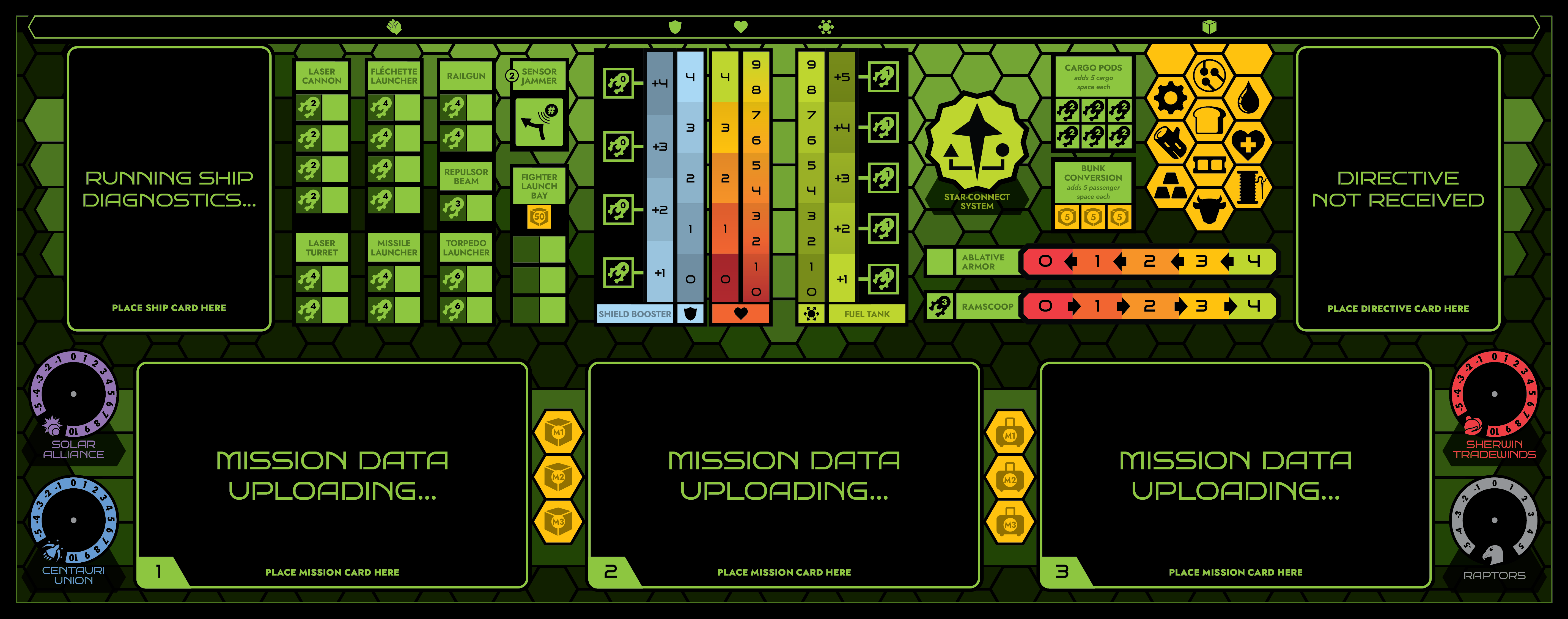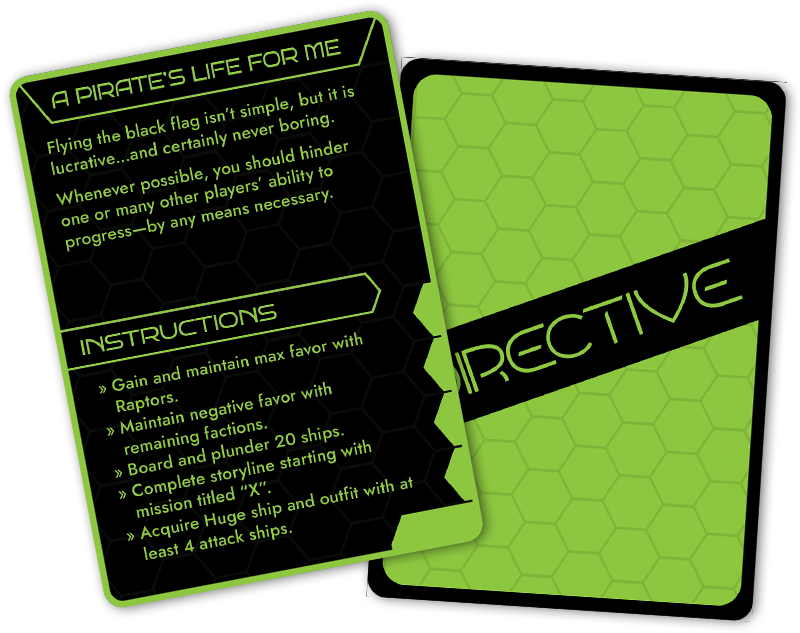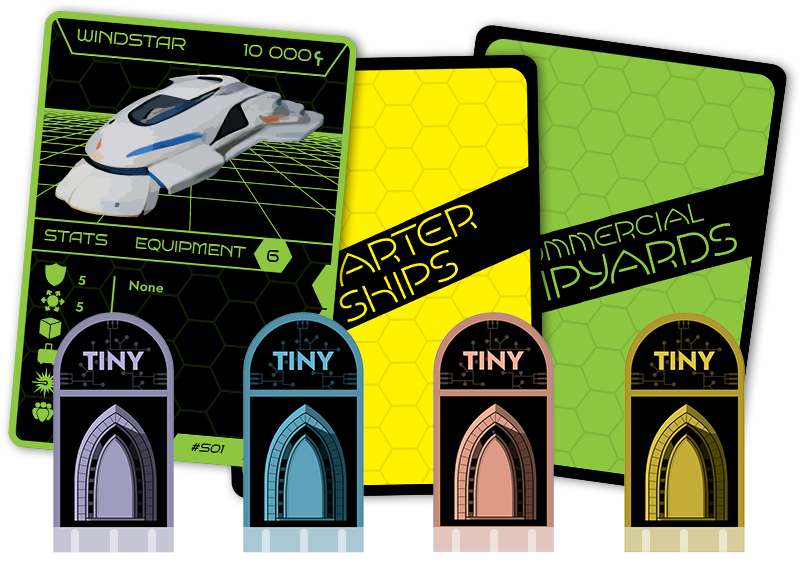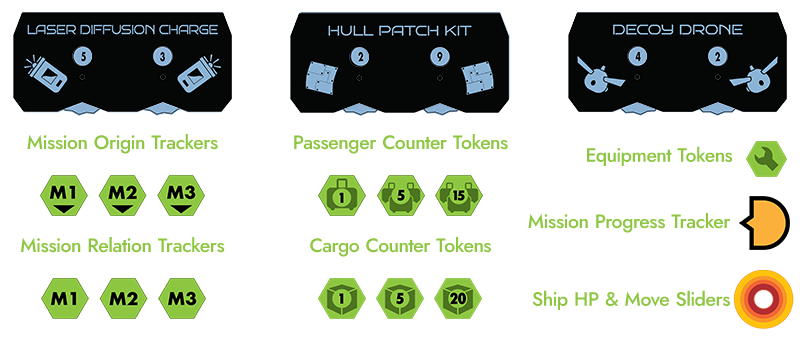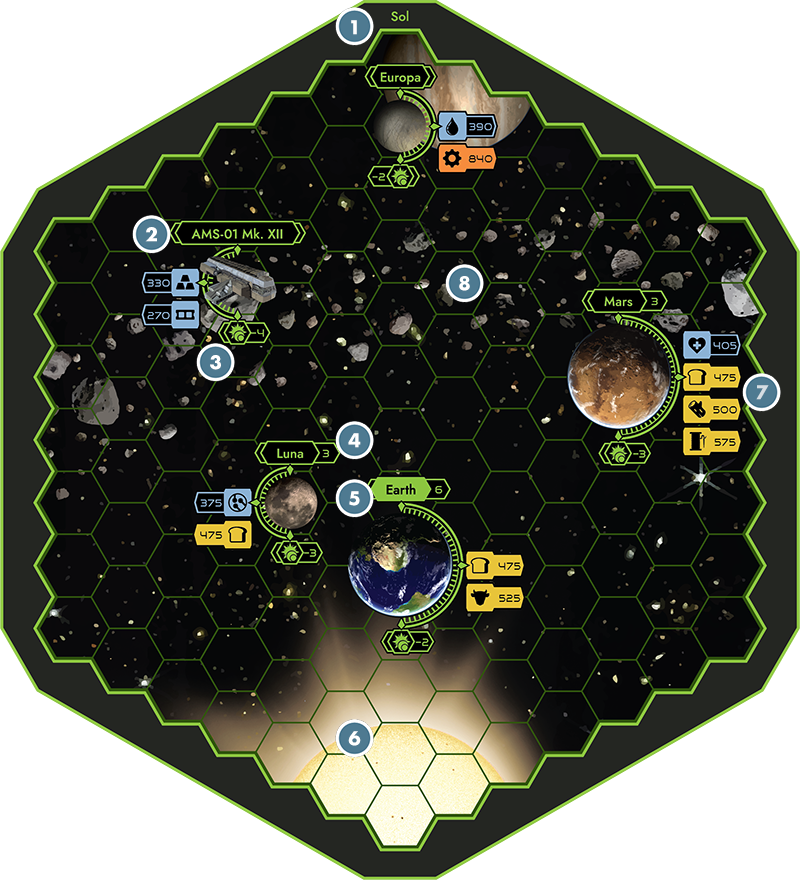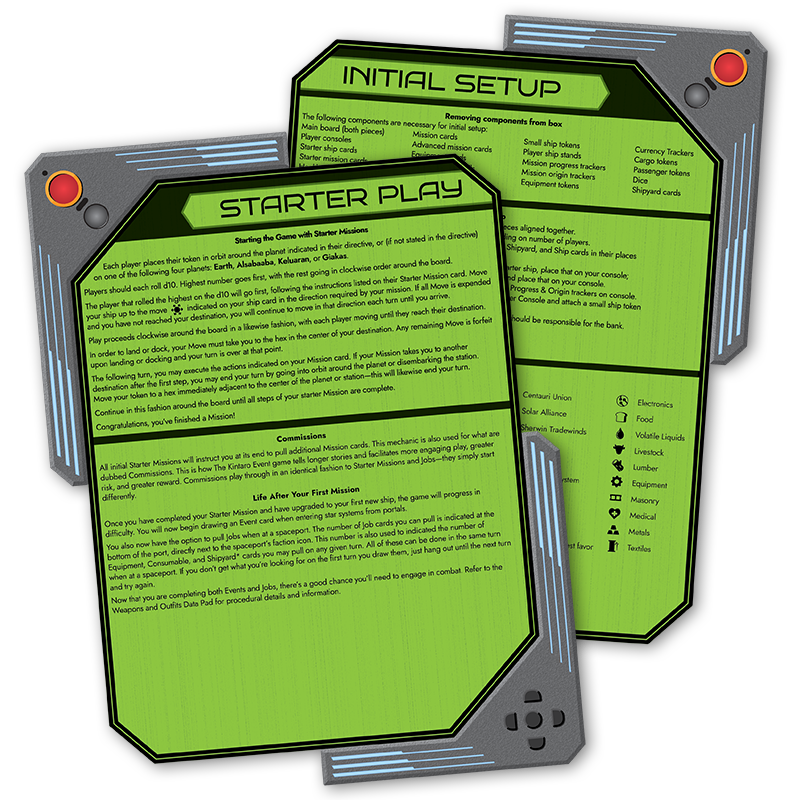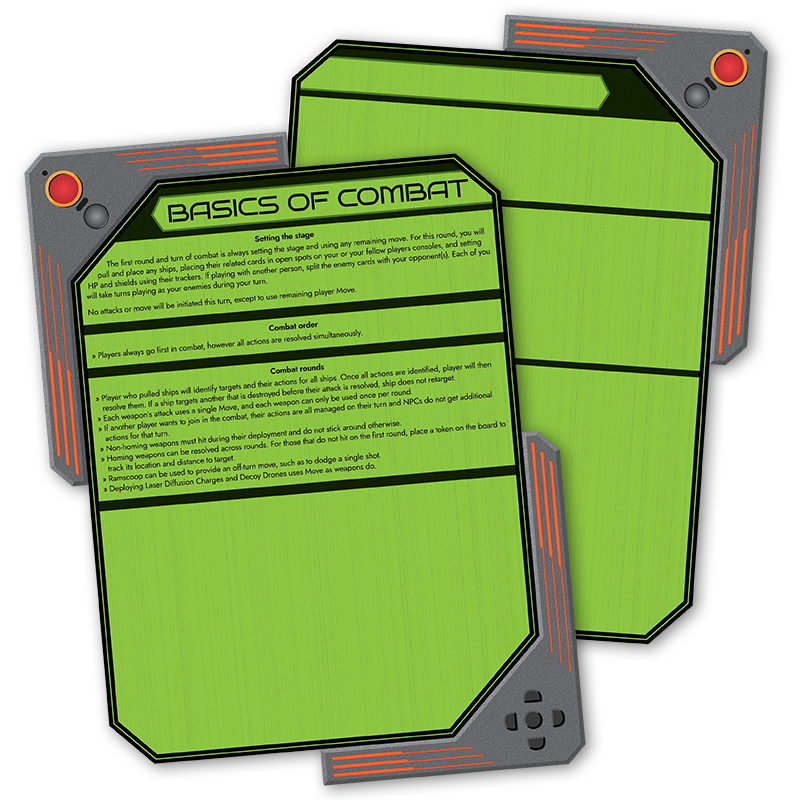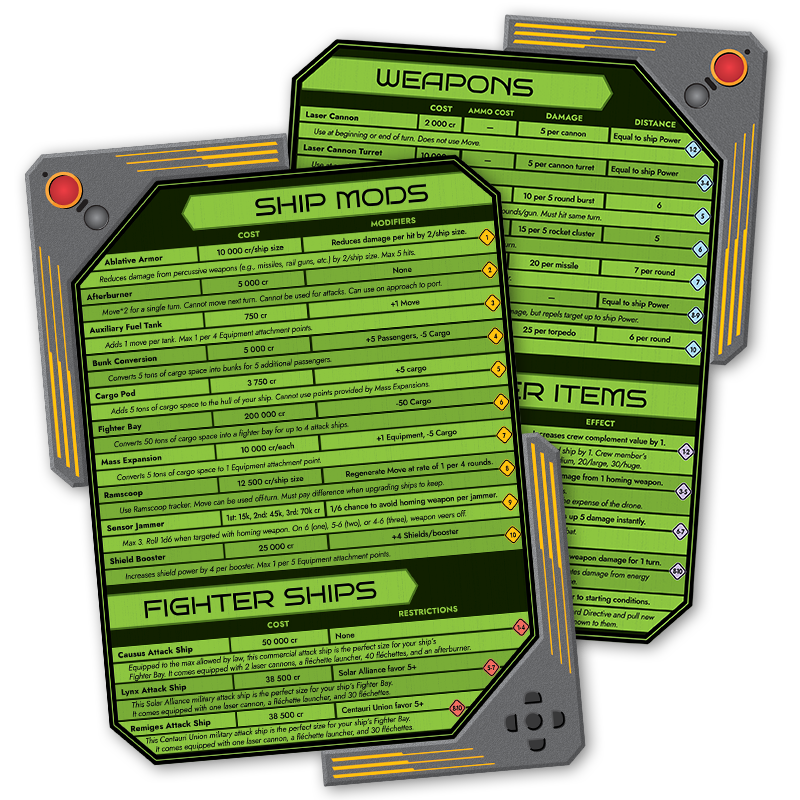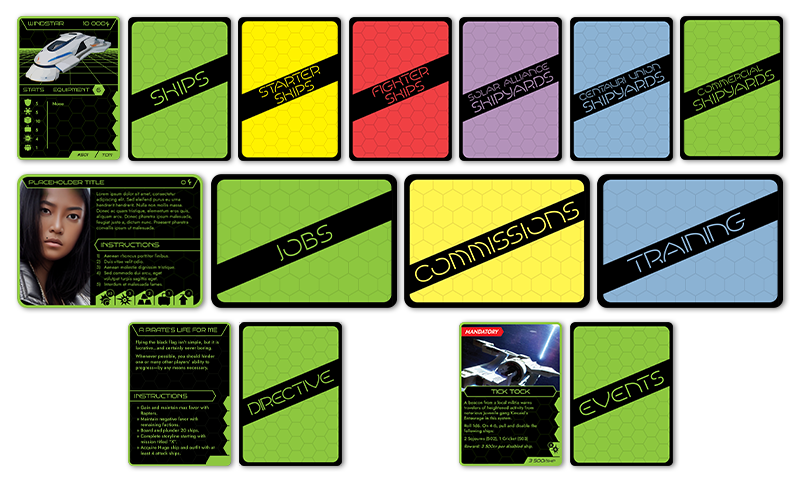
As previously mentioned, there are a total of 11 card decks. Of those, the Starter Ships, Fighter Ships, Training Missions, and Directives do not reside on the board. Every other deck has a place on the board, for easier access throughout the game.
Ships — used for non-player ships (NPCs) that appear throughout play. This deck should be kept in numerical order to make it easier to find specific ships used for Events and Missions.
Starter Ships — used at the start of the game only. Contains just 4 cards.
Fighter Ships — used only after players purchase ships to be deployed from their Fighter Bay. When needed, players will use these ships as their own in combat.
Shipyards — 3 decks total. Used when players are looking to upgrade their ships. Players will land on an appropriate planet, pull a number of ships from the appropriate deck, and (if pulled) purchase their choice of ship.
Jobs — tasks for players to complete for credits. Some Jobs lead into longer Commissions.
Commissions — longer form stories for players to complete for credits. The risk is often greater, but so is the reward. Some Commissions also provide bits of setting lore. This deck should be kept in numerical order to make it easier to find specific cards.
Training — a short set of Missions intended to provide players with a comprehensive play experience, so they become comfortable with the intricacies of the game more quickly. This deck should be kept in numerical order to make it easier to find specific cards.
Directives — see the Directive card modal for more information.
Events — short tasks for players to complete as they enter each system.
